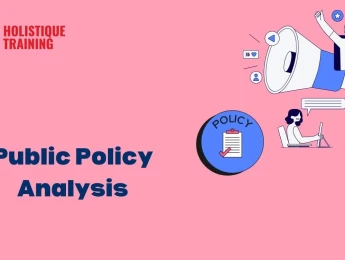To manage a project effectively and achieve a positive outcome, you must understand how to identify and manage potential risks and mitigate them against a budget plan. You need to make informed and calculated decisions to benefit your department, wider business, and employees and create an end product that works for your stakeholders and consumers.
Developing an effective plan requires you to assess opportunities and threats to move forward and take a proactive approach to change, gaining the support of your colleagues and partners along the way. You’ll need to discover a solution that covers all bases and complies with your organisation’s key goals. You'll also need to develop a monitoring and assessment process to understand your weaker areas and work on strategies that aid continuous improvement.
You will need to devise key performance indicators that support your project plan and create performance management procedures to motivate and inspire your team to work towards the same end goal.
Upon completion of this course, participants will be able to:
- Identify where change is needed to work towards continuous improvement.
- Evaluate risks and single points of failure within current processes and make comparisons to future processes.
- Communicate projects effectively to gain support from stakeholders and employees.
- Understand when a project isn’t working out and make changes to correct problems.
- Work within a set budget to effectively change processes for the better.
- Create a cost-benefit analysis of planned changes to ensure a return on investment.
- Accept leadership responsibilities and delegate effectively to achieve a positive outcome.
- Implement a performance management structure to manage against key objectives.
- Understand the implications of regulations and compliance measures and create an action plan to implement procedures that adhere to standards.
This course is great for anyone who is responsible for managing a project or mitigating risk factors within a growing or changing business. It would be especially beneficial for:
- Planning Managers
- Change & Control Managers
- HR Personnel
- Operations Managers
- Business Owners
- Directors
- Team Leaders
- Supervisors
This course uses a range of combined adult learning styles including self-assessment surveys, group discussions and training-led role-playing sessions to determine your current role in the project management process and seek out development areas.
You will then use a project plan matrix to discover the most cost-effective way forward for your business, using change and risk assessment models based on real-life scenarios to move forward and secure your return on investment.
Day 5 of each course is reserved for a Q&A session, which may occur off-site. For 10-day courses, this also applies to day 10
Section 1: Planning & Introduction to Change
- Why change is important.
- Setting a clear goal.
- Understanding the benefits of risk management.
- What it means to be a key decision-maker.
- Different types of risk and what they mean for your project.
- The project lifecycle.
Section 2: Identifying Risks
- The 6 steps of risk management – (PMBOK)
- Planning for risk.
- Risk identification.
- Quantifying risk and assessing reasoning.
- Developing a risk response strategy.
- Risk management execution.
- Evaluating risk responses and implementing fixes.
Section 3: Managing Expectations
- Project pitching and managing stakeholders.
- Negotiation and persuasion skills.
- Understanding your target audience.
- Setting clear timeline expectations for role out.
- Accepting and acting on constructive feedback.
Section 4: Analysis & Measurement
- Understanding potential risk outputs.
- Risk inputs and outputs.
- Qualitative vs. quantitative data.
- Probability analysis.
- Decision-making trees
- Prioritising matrix.
- The Gated process.
Section 5: Creating a Framework
- SWOT analysis.
- Risk identification tools and methods.
- Creating a schedule diagram (CPM – Critical path method).
- Establishing a project control system.
- Contingency planning.
Section 6: Budgeting & Cost Estimates
- Understanding your budget.
- Your cost division – what should your money cover?
- Costing methods.
- Work breakdown structures (WBS)
- The earned value method (EVM)
Section 7: Delegation & Management
- Resourcing your project.
- Your role as a leader.
- Gaining buy-in from employees.
- Understanding performance measures.
- Team motivation and moving forward.
Section 8: Review & Revisit
- PERT – Program evaluation and review technique.
- The Monte Carlo simulation.
- Threat responses and recovery strategies.
- Risk assessment documents and review schedules.
- Lessons learned and evaluating benefits.
Upon successful completion of this training course, delegates will be awarded a Holistique Training Certificate of Completion. For those who attend and complete the online training course, a Holistique Training e-Certificate will be provided.
Holistique Training Certificates are accredited by the British Assessment Council (BAC) and The CPD Certification Service (CPD), and are certified under ISO 9001, ISO 21001, and ISO 29993 standards.
CPD credits for this course are granted by our Certificates and will be reflected on the Holistique Training Certificate of Completion. In accordance with the standards of The CPD Certification Service, one CPD credit is awarded per hour of course attendance. A maximum of 50 CPD credits can be claimed for any single course we currently offer.
- Course Code PO4-101
- Course Format Classroom, Online,
- Duration 5 days














